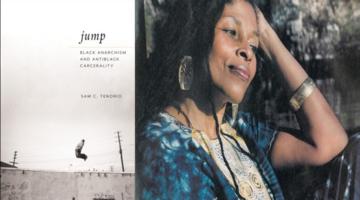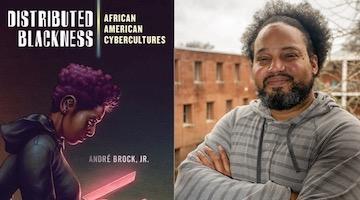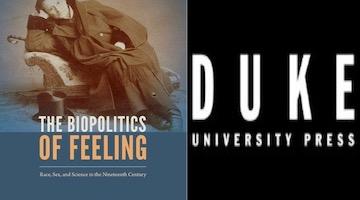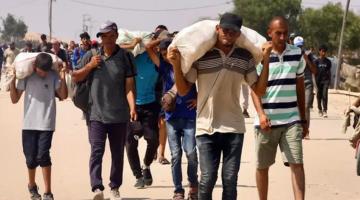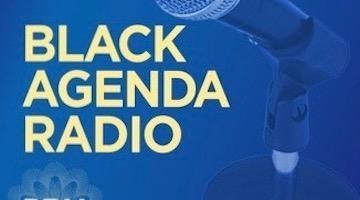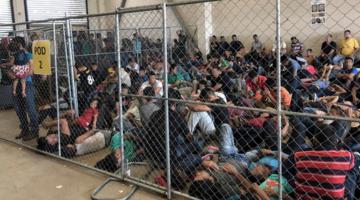This book is a story about a group of (mostly) women who wanted to make change and understood that liberation is an inside job.
“SisterSong have been trying to expand human rights, what I call revolutionary domestication.”
In this series, we ask acclaimed authors to answer five questions about their book. This week’s featured author is Zakiya Luna. Luna is Associate Professor of Sociology and Feminist Studies at University of California, Santa Barbara. Her book is Reproductive Rights as Human Rights: Women of Color and the Fight for Reproductive Justice.
Roberto Sirvent: How can your book help BAR readers understand the current political and social climate?
Zakiya Luna: I start Reproductive Rights as Human Rights: Women of Color and the Fight for Reproductive Justice with a vignette from a moment of celebration at a SisterSong conference. Back then, as with now, it is important to ask, what are you going to create if you win the fight? I didn’t want readers to forget what the book has been working toward: a space of human flourishing and dignity.
When you look up various definitions of reproductive justice, what usually appears is a variation of a definition from SisterSong: the right to not have children, the right to have children, the right to parent the children we have. And various definitions identify that it is “human rights–based.” I started my project wanting to know why a contemporary organization would choose human rights. How did the SisterSong coalition create the link? What did it look like in practice? And finally, (how) was SisterSong successful at this?
“What are you going to create if you win the fight.”
Reproductive Rights as Human Rights spans decades so something else I highlight is the U.S. government’s relationship to human rights and public policy around reproduction. I thought it was important to explore that since certain ideologies get embedded in laws and policies. They affect what administrations do and what movements are fighting for and how. The US government has generally been trying to restrict the meaning of human rights, what I call restrictive domestication, while coalitions like SisterSong have been trying to expand human rights, what I call revolutionary domestication.
What do you hope activists and community organizers will take away from reading your book?
I hope they take away questions to ask themselves: What makes me human? What do I want to thrive ? What do I want for my community to thrive ? Who am I going to work with to create that change? My book is a story about a group of (mostly) women who wanted to make change and understood that liberation is an inside job. You have to shift the ways people understand themselves in relation to the world if you want them to be able to imagine a different world.
I included the Universal Declaration of Human Rights in the appendix because many people have never looked at it. We generally do not learn about in US schools. While “human rights” brings many tensions with it, it still serves as an inspiring vision for many people in the US and globally.
I hope my book reminds them that change is possible and it takes time.
We know readers will learn a lot from your book, but what do you hope readers will un-learn? In other words, is there a particular ideology you’re hoping to dismantle?
I love this question! I hope readers unlearn simplicity. What I mean is that social movements are complex and full of people, who are complex and have complex motivations and visions for the world. Two things can be true at the same time—you can be Black and be a woman. No one gets to go into a room and somehow leave their body at the door.
To that end, I would love it if people could see that conflict is part of movements and that is okay. Conflict can help a movement refine ideas, consider other possibilities and learn. Rather than shy away from it, movements can use this conflict to understand that people are still invested—they still care—and that is why people are in conflict.
“Conflict can help a movement refine ideas, consider other possibilities and learn.”
I hope readers unlearn the idea that Black women do not care about reproductive issues. I hope readers unlearn the idea that Latinx people do not care about reproductive issues. Most people reading this Forum would answer the question, “Do you want to be able to control your own body and make your own decisions about it?” with a “Yes.” And they’d answer “Do you want your neighbor to be able to control your body and make decisions about it for you?” with a “No.” Why would Black, Latina, Asian, Indigenous women be any different?
I hope readers unlearn the idea that Black, Latina, Asian, Indigenous women cannot work together or with the men and other people in their communities or across these communities. It is just not true – we have lots of historical evidence to show movements they developed have worked together, inspired and made change.
I want people to unlearn the idea that movements need to be perfect.
Who are the intellectual heroes that inspire your work?
I think the word “intellectual” can be applied broadly – sometimes they are traditional academics, sometimes not. My intellectual heroes are people who through their words and actions demonstrate a commitment to different ways of thinking and being in the world.
Dorothy E. Roberts wrote Killing the Black Body over 20 years ago making the case that the treatment of Black women’s bodies under slavery created the foundation for the US’ reproductive health care policy and family policy broadly. She has written about adoption, biotechnologies, the invention of “race” as a medical project – she writes something new every week. And she is active on Twitter! Many of us look up to her because she is brilliant, generous and an engaged scholar who charted her own path, which allowed many of us to have a bit of a guiding light.
When I first read Carol Anderson’s Eyes Off the Prize: The United Nations and the African-American Struggle for Human Rights, 1944-1955 I was so surprised because when I had read things about the Civil Rights movements, human rights was not discussed. As Anderson identifies in this book, there is a reason for that. I think so many movements in the US and globally have looked at the US Civil Rights movements as a model, but we have generally only learned part of that history. When I was collecting data in Atlanta area once, I reached out to Anderson and we got lunch and she helped me think about some of the ideas for my book. It is amazing to be able to talk with people who are able to publish rigorous academic books, and translate those to a non-academic audience and be on The Daily Show with Trevor Noah.
“The treatment of Black women’s bodies under slavery created the foundation for the US’ reproductive health care policy.”
Loretta Ross, who figures prominently in my book, and Sujatha Jesudason are both reproductive justice movement leaders whose writing and talks are mind blowing. They pull together ideas seamlessly and from what I have seen over the years, their thinking is way ahead of other people on so many ideas. Ross has been raising the alarm on understanding white supremacy in anti-abortion movements and its relationship to conservative politics for decades. I always learn something new when I hear them speak.
Jesudason (and Dorothy Roberts) were asking about the racial meaning of genetic technologies about 20 years ago. Jesudason is also one of the few movement thinkers I have seen proactively try different models with organizations and projects she was leading. That includes closing organizations rather than assuming they need to last forever. Sometimes one version needs to end so new leadership can come forward and new ideas be tested.
In what way does your book help us imagine new worlds?
Radical movements are always about imagining new worlds—they make demands that seem impossible. But those demands only seem impossible based on what people know of the world now. Reading a book involves words on the page (or listening to audio) but movements are about feeling inspired to act for a new world. Going back to my book’s opening vignette—what would the world *feel* like if we had full human rights and were trying to make our movements embody that as we worked for change? My book is exploring that because human rights was taken as a given in various reproductive justice space, but what human rights looks like in practice depends on how it is interpreted by the people trying to achieve it.
Roberto Sirvent is a teacher living in California.
COMMENTS?
Please join the conversation on Black Agenda Report's Facebook page at http://facebook.com/blackagendareport
Or, you can comment by emailing us at comments@blackagendareport.com

